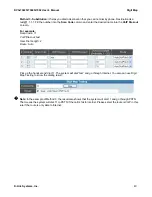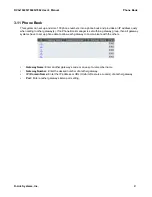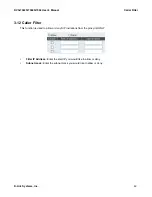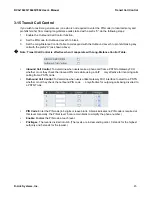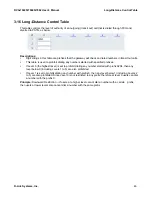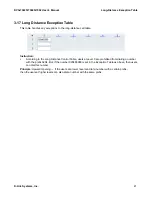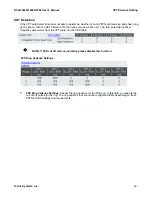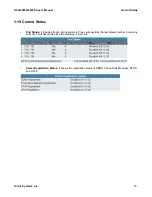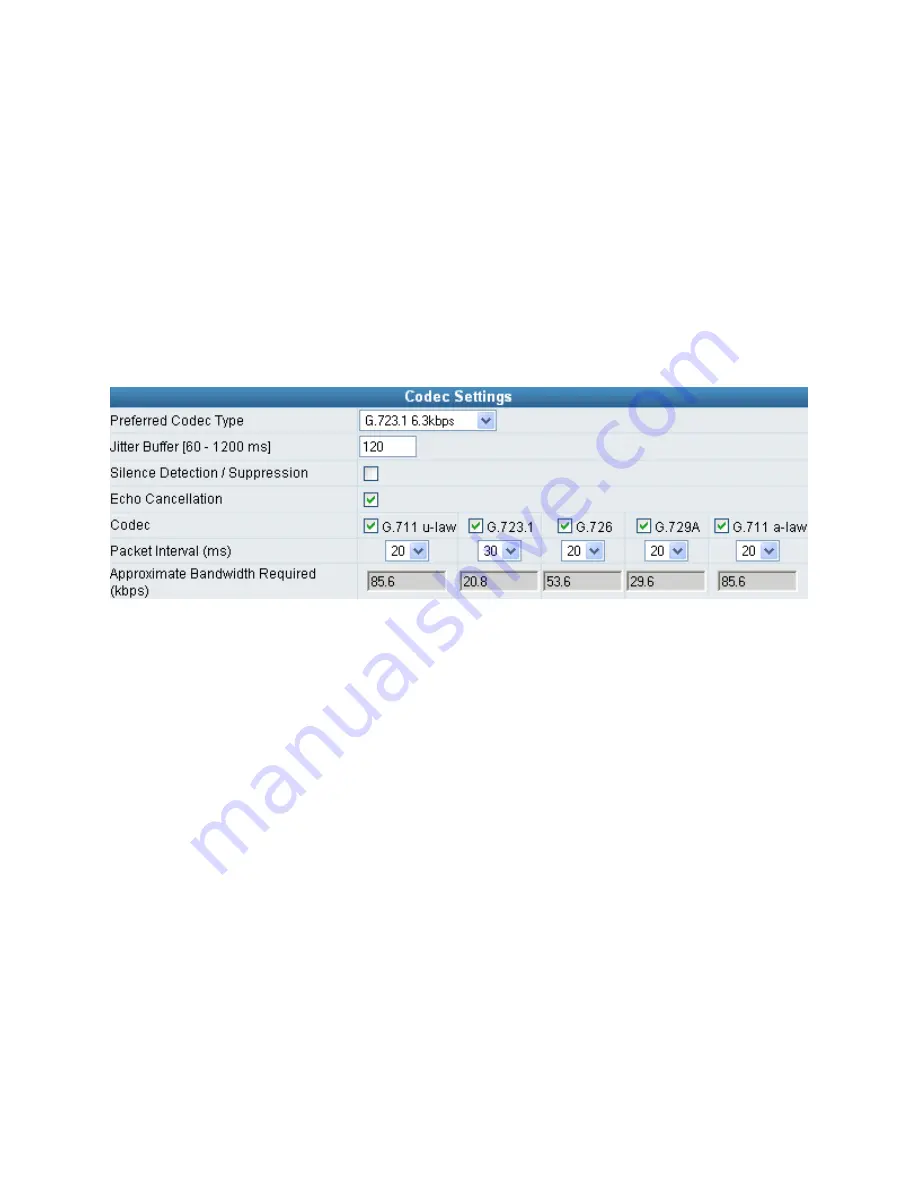
DVG-7022S/7044S/7062 User’s Manual
Advanced Options
FXO:
This option forces the gateway to detect the reversal of polarity on FXO port as the primary
signal to drop a call. Some telephone switches or PBX reverse the line polarity to inform the remote
end to drop an ongoing call. Please consult with the telephone service provider for availability of this
feature.
y
PSTN Answer Detection
: This is used only by ITSP.
y
PSTN Ring OFF Length
: FXO/PSTN make out if the call from PSTN hangs up before FXS answer the
call.
y
FXS Chip Option 1
: It is to avoid mis-detecting the loop state of a subscriber line or PBX user loop by
FXS interface. In some places, the voltage of off-hook makes it mis-detect the idle state and the active
state by FXS interface. Untick this variable if it mis-detects the state by FXS interface in your place.
y
FXS Current:
It is used to set FXS output current configuration.
Codec
Settings
y
Preferred Codec Type:
Since different voice codecs have different compression ratios, the sound quality
and occupied bandwidths are also different. It is recommended that you use the default provided (G.723.1)
because it occupies less bandwidth and will provide better sound quality.
y
Jitter Buffer:
Adjusts the jitter to receive a packet. If the jitter range is too wide, it will delay voice
transmission.
y
Silence Suppression:
If one side of a connection is not speaking, the system will stop sending voice data
(package) to decrease bandwidth usage.
y
Echo Canceling:
Prevents poor telecommunication quality caused by echo interference.
y
Codec:
Choose the codec that you needs.
y
Packet Interval:
Defines how long the gateway sends a RTP packet or voice packet to the receiving side.
The smaller the value, the greater the bandwidth usage, but larger values increase voice delay.
y
Approximate Bandwidth Require:
The bandwidth required varies with codec format and packet time.
D-Link Systems, Inc.
35




















